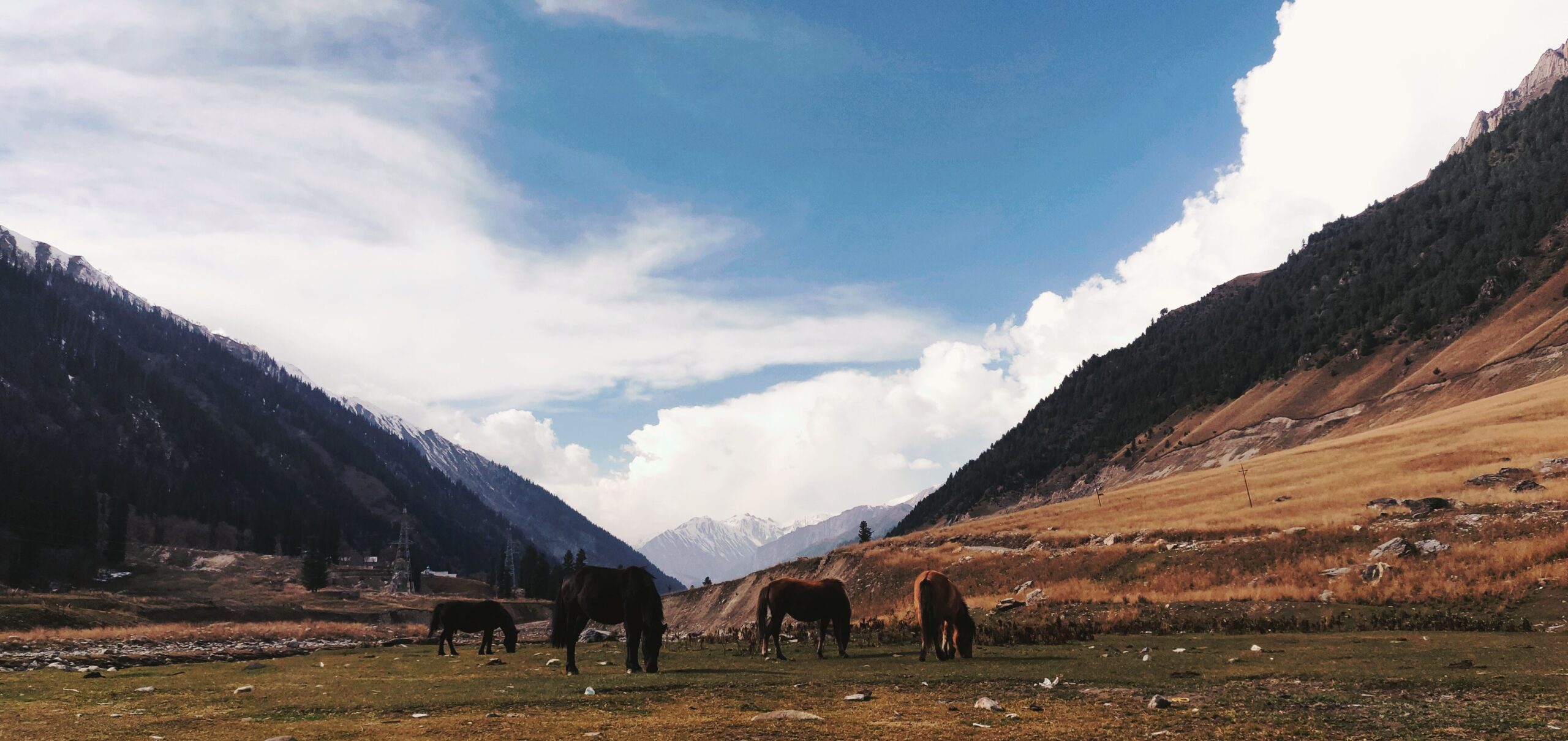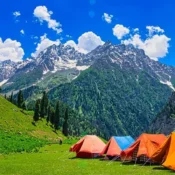
Kashmiri Gardens: Where Nature and Architecture Converge
Kashmiri Gardens: Where Nature and Architecture Converge
Discover the Enchantment of Kashmir’s Horticultural Treasures
Introduction: Kashmiri Gardens’ Timeless Allure
Nestled within the picturesque landscapes of the Jammu and Kashmir region in India, Kashmiri gardens have stood the test of time as veritable showcases of nature’s splendor and architectural ingenuity. This article invites you on a comprehensive journey through these captivating gardens, where the fusion of Mughal and Persian design with the region’s natural topography has given birth to an unparalleled horticultural tradition that has flourished for centuries.
Aqua Symphony: Water’s Central Role
Harnessing Water for Beauty and Functionality
One of the most captivating features of Kashmiri gardens is their seamless integration of water elements. These gardens boast a meticulous network of water channels, playful fountains, and serene pools that compose a harmonious symphony, providing a refreshing respite from the sweltering summer heat. Beyond aesthetics, these water channels play a pivotal role in the irrigation of the gardens, ensuring the perennial health and vibrancy of the diverse flora that graces their meticulously designed landscapes.
Intricately designed water channels, known as ‘nahr,’ crisscross these gardens, choreographing a dance of fluidity and grace. The sound of cascading water, combined with the reflection of the surrounding greenery on the tranquil pools, creates an ambiance that is nothing short of enchanting. These water features aren’t just ornamental; they are ingeniously engineered to serve a dual purpose. They not only enhance the aesthetic appeal but also contribute to the sustainable cultivation of a variety of plants, from the vibrant roses to the aromatic saffron, that call these gardens home.
Symmetry and Harmony: Designing Beauty
The Art of Symmetrical Layouts
Kashmiri gardens are celebrated for their commitment to symmetrical design, a hallmark of Mughal and Persian influences. These meticulously planned layouts often feature a central axis, anchored either by a gently flowing water channel or an inviting pavilion. This symmetrical arrangement not only imparts a sense of equilibrium but also serves as a guiding beacon for visitors as they embark on their exploration of these verdant sanctuaries.
The layout, often referred to as ‘Chahar Bagh,’ is rooted in Persian garden design principles. It divides the garden into four equal quadrants, each reflecting the other in perfect symmetry. This emphasis on symmetry is symbolic of the Mughal pursuit of balance in life, a concept that resonates deeply in these meticulously landscaped gardens.
Intriguingly, the concept of symmetry extends beyond the visual aspects of the garden. It also pertains to the auditory experience. The water channels, meticulously engineered to create a gentle flow, mimic the symmetrical design and create a harmonious auditory backdrop as visitors stroll through the garden. The symphony of water, plants, and architecture forms a sensory tapestry that enriches the overall experience.
Elevation Drama: Terraced Grandeur
Ascending Through Beauty
The undulating terrain of Kashmir has inspired the incorporation of various levels and terraces in these gardens. These terraces are thoughtfully designed to facilitate a gradual ascent up the hillside, adding an element of anticipation and drama to the visitor’s journey. Moreover, they provide awe-inspiring panoramic views of the surrounding landscapes, heightening the garden’s allure.
Each terrace, known as ‘bagh,’ offers a unique perspective of the garden’s beauty. The transition from one terrace to another is a deliberate act, akin to turning the pages of a living storybook. As you ascend through these terraces, you’ll witness a curated display of nature’s artistry, from cascading waterfalls to meticulously pruned hedges, and from the vibrant blooms of seasonal flowers to the quiet shade of ancient chinar trees.
Interconnecting these terraces are gracefully crafted staircases, known as ‘zarin,’ that further elevate the overall grandeur of these horticultural masterpieces. These staircases are not just functional elements; they are architectural marvels, often adorned with intricate carvings and designs. As you climb these staircases, you embark on a journey not just through the garden’s elevations but also through time, immersing yourself in the rich history and culture that these gardens encapsulate.
Beyond the Classics: Exploring Lesser-Known Gardens
Unveiling Hidden Horticultural Gems
While Shalimar Bagh, Nishat Bagh, and Chashma Shahi are renowned, Kashmir boasts a wealth of other extraordinary gardens worth discovering. Chinar Bagh, with its resplendent Chinar trees, forms a mesmerizing canopy of vibrant foliage. Pari Mahal, or the “Palace of Fairies,” showcases intricate Mughal design within a picturesque garden setting. Harwan Garden, with its pristine spring, offers a tranquil haven for those seeking solace in nature’s embrace. These lesser-known gardens expand the rich tapestry of Kashmiri horticulture.
Chinar Bagh: Canopy of Majestic Chinar Trees
Chinar Bagh, as the name suggests, is a garden where the magnificent Chinar trees take center stage. These majestic trees, known for their vibrant autumnal hues, create a mesmerizing canopy that paints the garden with shades of crimson and gold during the fall season. It’s a sight that has been celebrated in countless poems and paintings, capturing the essence of Kashmir’s autumnal charm.
Within Chinar Bagh, the symmetrical design principles of Kashmiri gardens are evident. The garden’s pathways follow a precise layout, inviting visitors to meander beneath the sprawling Chinar trees, providing respite from the sun. The sound of leaves rustling in the breeze is a melody that serenades visitors as they explore this natural wonder.
Pari Mahal: Where History Meets Garden
Pari Mahal, also known as the “Palace of Fairies” or the “Abode of Angels,” offers a unique blend of historical architecture and garden aesthetics. This garden, unlike the traditional Mughal gardens, is characterized by its terraced layout, reminiscent of Greek amphitheaters. Each terrace presents a vantage point from which visitors can admire the surrounding landscape.
The garden is an integral part of the Pari Mahal complex, serving as a tranquil oasis amidst historical ruins. Visitors can explore the garden’s terraces while marveling at the intricacies of Mughal architecture. Fragrant flowers and aromatic herbs intermingle with the historical stones, creating a sensory experience that transports you to another time.
Harwan Garden: A Spring of Tranquility
Harwan Garden, with its natural spring, offers a serene retreat for those seeking solace in nature’s embrace. The garden’s history dates back to the 14th century when it was commissioned by Sultan Zain-ul-Abidin. The crystal-clear spring that flows through the garden is believed to have healing properties, attracting visitors in search of both physical and spiritual rejuvenation.
The garden’s layout is characterized by cascading terraces, each featuring meticulously maintained flowerbeds and shaded walkways. The sound of the babbling spring is a constant companion as you explore the garden, providing a soothing backdrop to your journey.
Preserving Cultural Heritage: Guardians of History
Bridging the Past and Present
Kashmiri gardens are not mere showcases of natural beauty; they are living repositories of the region’s cultural heritage. These gardens serve as enduring legacies of the Mughal era, providing a glimpse into the artistic and horticultural traditions of their creators.
The gardens have been meticulously preserved over the centuries, with a commitment to maintaining their historical and aesthetic integrity. The intricate stonework, the symmetrical layouts, and the ingenious use of water channels all reflect the architectural and landscaping prowess of their Mughal and Persian architects. Walking through these gardens is like stepping back in time, a journey through the eras that shaped the region’s cultural identity.
A Journey Through Time: The Evolution of Kashmiri Gardens
The history of Kashmiri gardens is a tale of continuous evolution and adaptation. It began with the Persian influence on garden design during the reign of Mughal emperors like Babur and Akbar. Over time, these gardens have absorbed local influences and traditions, resulting in a unique Kashmiri garden style that’s both functional and aesthetically pleasing.
The introduction of the ‘chahar bagh’ layout, with its emphasis on symmetry, marked a significant shift in the design of these gardens. This layout not only provided a visual treat but also reflected the Mughal concept of balance in life, mirroring the balance found in nature.
As Kashmiri gardens evolved, they embraced the region’s topography. The use of terraces to navigate hilly terrain not only added drama to the garden experience but also allowed for the cultivation of a diverse range of flora.
The Plants of Kashmiri Gardens: A Botanical Extravaganza
Kashmiri gardens are not just about water features and architectural elegance; they are also showcases of diverse plant life. These gardens house a wide array of plants, each carefully chosen for its aesthetic and cultural significance.
1. Chinar Trees: The majestic Chinar tree, with its striking leaves and vibrant fall colors, is a symbol of Kashmir. These trees often line the pathways, creating a magnificent canopy of shade and beauty.
2. Roses: Kashmiri gardens are renowned for their roses. The gardens are home to various rose varieties, and the sight and fragrance of these blooms in full glory are simply enchanting.
3. Saffron: The delicate saffron crocus, known for producing the world’s most expensive spice, thrives in the fertile soil of these gardens. Saffron cultivation is a cultural tradition in Kashmir, and the gardens contribute to this heritage.
4. Fruit Trees: Many Kashmiri gardens feature fruit-bearing trees like apple, pear, and plum. These not only add to the aesthetic charm but also provide a source of fresh produce.
5. Medicinal Plants: Some gardens, like Harwan Garden, are known for their natural springs with reputed healing properties. The presence of medicinal herbs and plants adds an intriguing dimension to the garden experience.
Kashmiri Gardens: A Living Cultural Heritage
Kashmiri gardens are not static museums; they are dynamic, living spaces that continue to be woven into the fabric of Kashmiri culture and identity. Festivals and celebrations often take place within these gardens, celebrating the changing seasons, the bloom of flowers, and the cultural richness of the region.
Artists and craftsmen find inspiration within these gardens, creating intricate woodwork, textiles, and paintings that reflect the beauty and harmony they observe. The gardens are not just a physical space but a wellspring of creativity and cultural expression.
Conclusion: The Enduring Magic of Kashmiri Gardens
In conclusion, Kashmiri gardens transcend mere horticultural spaces. They are living works of art, a harmonious convergence of nature and human creativity that has been honed over centuries. Visitors to these gardens embark on immersive journeys, meandering along meticulously designed pathways, basking in the kaleidoscope of colorful flora, and finding solace beside ornate water fountains.
Whether you are an ardent nature enthusiast, a history aficionado, or simply in search of a serene retreat, Kashmiri gardens beckon with open arms. They promise an unforgettable voyage through time and beauty, inviting all to partake in the profound harmony of nature and culture that thrives within their lush embrace. It is a destination that rightfully belongs on every traveler’s bucket list, extending an invitation to savor the timeless allure of these horticultural wonders and celebrate the enduring magic they continue to offer.
3 thoughts on “Kashmiri Gardens: Where Nature and Architecture Converge”
Add a Comment Cancel reply
All Categories
Recent Posts
Kashmir’s Doors Reopen: Paradise Beckons Once More
Distance from Srinagar to Popular Tourist Destinations in Kashmir
Detailed Analysis: Impact on Tourism in Kashmir Post-April 22 Attack






[…] Mughal Gardens: Srinagar is renowned for its exquisite Mughal Gardens, such as Shalimar Bagh, Nishat Bagh, and […]
[…] interwoven with a rich history, and the region is home to several historic sites and monuments. The Mughal Gardens in Srinagar, a testament to this rich cultural heritage, date back to the 16th century. Mughal […]
[…] of the Tulip Garden makes it a central attraction. It is surrounded by majestic hills, historic Mughal gardens, and the breath taking Dal Lake. Nearby attractions include the Chashme Shahi Garden, Pari Mahal, […]